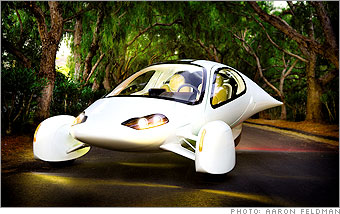For the first time since the early 20th century, America is seeing a flowering of entrepreneurship in the auto industry. At least 11 new electric car companies, each working on a wide range of technologies, have launched or plan to launch models. These upstarts are not modest. They believe they can do what major automakers have failed to do: bring an electric car to the mass market.
Electric cars, to be sure, are not new. About a century ago Thomas Edison joined forces with Henry Ford to develop an electric car that would be as affordable as the Model T. In those early days of the automobile, hundreds of manufacturers tried to compete, making both electric and gasoline-powered cars. But economies of scale were not on their side, and small shops -- some 415 of them in 1914 -- eventually gave way to the Big Three.
The internal-combustion engine could be refueled more conveniently than a battery could be recharged, especially on long trips, and that advantage all but killed electric auto technology. Over the years entrepreneurs would occasionally emerge with a new design to challenge the Big Three, yet all failed. The two most memorable flameouts: Preston Tucker in 1948 with his Tucker Torpedo, and John De Lorean with his silver gull-winged sports car in the 1970s -- both of which used internal-combustion engines.
So why does today's new breed of small, renegade car company think it can succeed where so many other auto startups have failed? The entrepreneurs and investors behind the firms point to four factors: consumer desire to address global warming, an abundance of investment capital, new breakthroughs in fiber composite body material, and the availability of cheap computing power and software that help simulate design challenges long before new cars hit the road.

